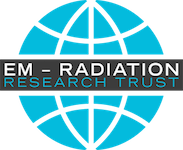Joel M. Moskowitz, Ph.D.
Director
Center for Family and Community Health
School of Public Health
University of California, Berkeley
Monday, December 9, 2024
5G Wireless Technology: Is 5G Harmful to Our Health?
See the bottom of this page for additional summaries and resources.
Worldwide deployment of 5G, the fifth-generation of cell phone technology, started in 2019. 5G cellular technology employs low-band (600-900 megahertz), mid-band (1.7-4.7 gigahertz), and high-band radio frequencies (24-47 gigahertz).
The allocation of radio frequency spectrum for 5G varies by country. In the United States, the Federal Communications Commission (FCC) has allocated low-band spectrum at 0.6-0.8 GHz (i.e., 600-800 MHz), mid-band spectrum in the 2.5-4.0 GHz range, and 11 GHz of high-band frequencies including licensed spectrum from 24-28 GHz and 37-47 GHz, as well as unlicensed spectrum from 64-71 GHz which is open to all wireless equipment manufacturers.
To increase transmission speed 5G utilizes complex modulation of the carrier wave (i.e., Orthogonal frequency-division multiple access). Other features include massive multiple-input multiple-output (MIMO) or the capacity to send large amounts of data across multiple streams, and beamforming or the use of multiple antennas to control the signal enabling it to be targeted toward specific users. These features can create brief, but very intense, exposures to radio frequency radiation. Since current exposure limits are based upon exposures averaged over time (6 or 30 minutes), these bursts of radiation are essentially unregulated.
Biological and Health Effects of 5G
Hardly any research has been published on the biological or health effects of 5G. According to EMF-Portal, an archive that contains more than 44,000 publications on electromagnetic fields, of the 870 papers published on “5G,” only 37 (4%) were medical/biological studies (as of December 9, 2024).
The 37 studies reported statistically significant evidence of oxidative stress and adverse effects on the neuroendocrine system, the cardiovascular system, sleep quality, sperm quality and DNA damage, bone quality, gene expression, and sensorimotor responses. Most studies used animal models and short-term exposures to microwave radiation (especially continuous wave 3.5 GHz).
However, only five of these 37 studies may have actually tested the effects of 5G exposure. The biologic and health effects associated with exposure to 5G radiation depend on more than just the carrier frequency. Although these 37 studies employed carrier frequencies common to 5G (e.g., 0.7 GHz, 2.5-3.6 GHz, 27-36 GHz), only five studies tested exposures with 5G modulation that is likely to affect the nature and extent of biological or health effects produced by exposure. Most studies employed a continuous wave generator; yet, 5G requires a complex modulated, orthogonal frequency-division multiplexing (OFDM) signal with additional features that yield brief, high intensity exposures (i.e., phased arrays, beamforming, and massive MIMO).
Thus, to quote Senator Richard Blumenthal, we are still “flying blind” with regard to ensuring the safety of the population from the short- and long-term effects of widespread exposure to 5G radiation.
The five 5G studies are briefly summarized below (Hardell and Nilsson, 2023; Chu et al., 2023; Pustake et al., 2022; Perov et al., 2022; Krivona et al., 2024).
Two studies examined the effects of exposure to a 5G cell tower but were subject to confounding with other radio frequency exposures:
- Hardell and Nilsson (2023) reported a case study in which a man and woman developed electromagnetic hypersensitivity (EHS) with neurological symptoms, headache, fatigue, insomnia, tinnitus, skin disorders, and blood pressure variability) after a 5G antenna was added to a 3G/4G cell tower on the roof of their apartment building. (To date, this research team has published seven case studies with 5G base stations and a summary of all seven reports.)
- Perov et al. (2022) exposed male rats for four months to a 5G base station that transmitted at 3.6 GHz, 28 GHz, and 36 GHz and found that the exposure moderately increased stress on the neuroendocrine system.
Two studies examined the effects of exposure to 5G using 4G/5G cell phones:
- Chu et al. (2022) conducted a pilot study in which human semen samples were briefly exposed to smart phones and found that Wi-Fi negatively affected sperm motility and viability, but not 4G/5G; however, the results varied across phones.
- Pustake et al. (2022) exposed butter bean seeds to a 4G/5G cell phone and found adverse effects on seed germination and growth.
One study examined the effects of 5G exposure using a signal generator that simulated 5G base station modulation (but not other features of 5G):
- Krivona et al. (2024) continuously exposed male rats for 4 weeks to 5G radiation (average whole body SAR = 0.0076 W/kg and 0.0059 W/kg; 2.4 GHz carrier frequency) and found no statistically significant cognitive differences in the Morris water maze test as compared to control rats.
Following are the 37 mislabeled “5G medical/biological studies” listed in EMF-Portal:
👇

